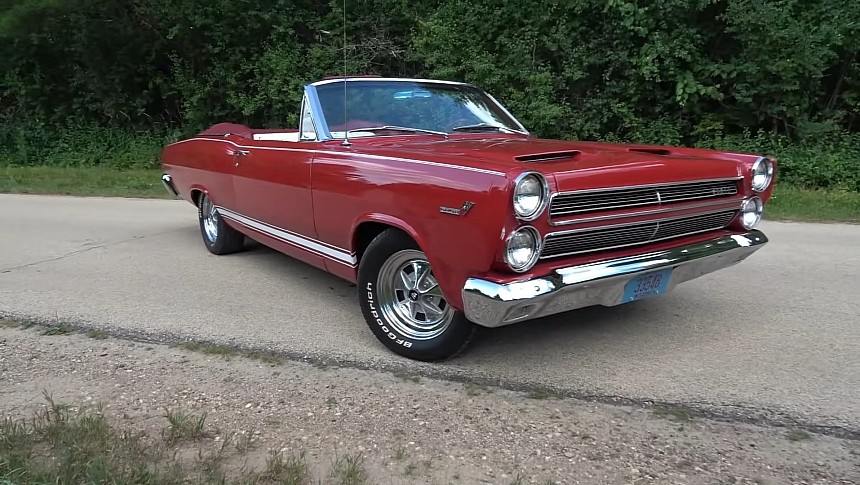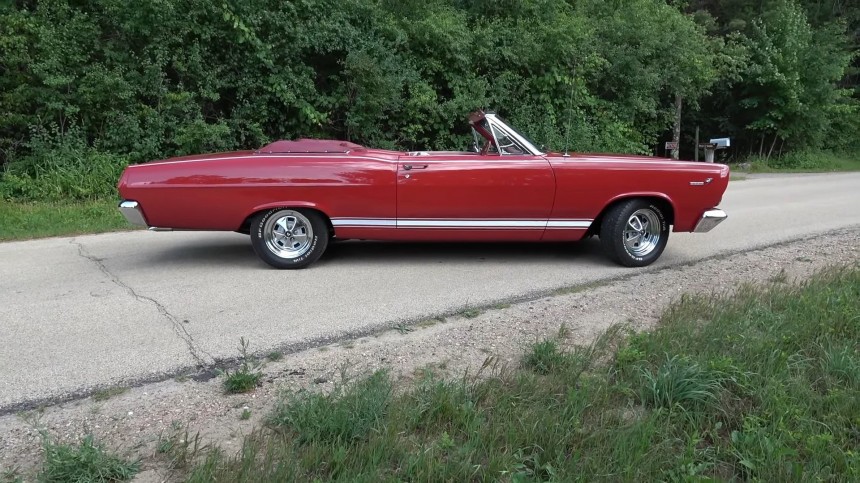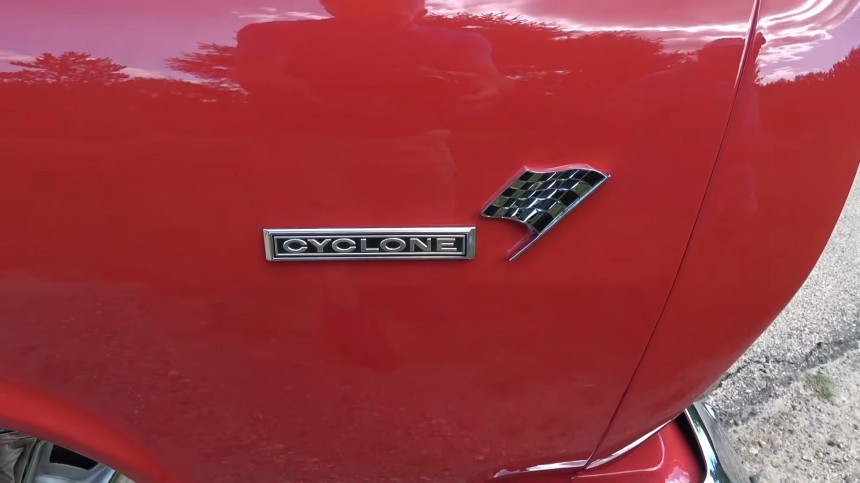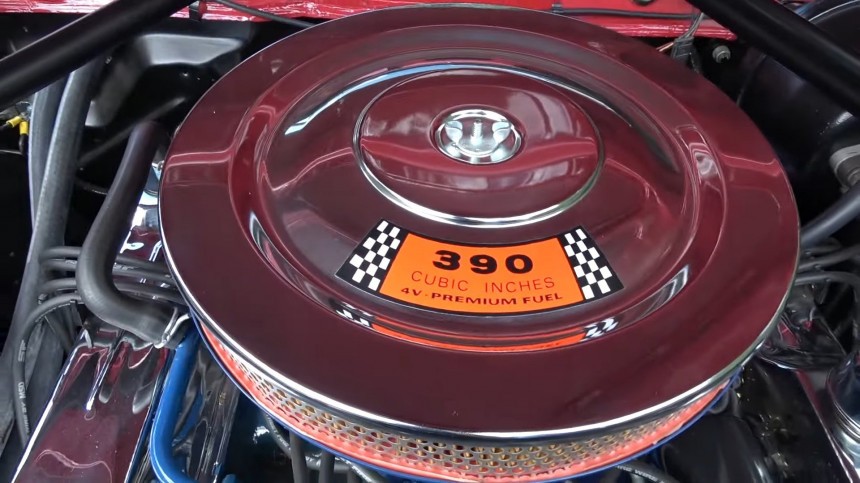The 1966 Mercury Comet could be considered the perfect example of ‘if at first you don’t succeed, give it another go.’ The first generation, built between 1960 and 1963, somehow missed the mark in the new ‘intermediate’ class of automobiles motoring America’s sweetheart in the early sixties. The second iteration – a two-year stride from Ford – brought no significant sales chart changes to what the original model had laid before.
Perhaps the upmarket marketing of the revamped Ford Falcon (incidentally, the best-selling intermediate at the time) fended off buyers. Seeing that mainstream sales strategies don’t work, the FoMoCo executives took the gutsy approach of advertising their not-so-new Comet’s durability above all else.
That’s right: the car was to be a count-on-me automobile that would drive 100,000 miles and still have a punch to throw. This might seem metaphorical, but the Mercury bosses made that promise to the public at Daytona. Not during the famous race but on a record-setting trial that saw five Mercury Comets run at high speeds on the steep banks of the oval, averaging over 108 mph (174 kph). 732 FIA records were achieved during thesix-week non-stop Comert Durability Run (watch the second video to see the Mercuries in action).
1965 was another year of good auspices for Ford’s division, with a team of Comets driving 16,247 miles (26,141 km)1 from the tip of South America to Fairbanks, Alaska, in 40 days. Upon arrival at the destination, racecar builder Don Bailey told the press, "Mechanically, we didn't even adjust the carburetor for altitude, didn't suffer a single breakdown, didn't replace so much as a sparkplug." The Comet wasn’t about to shine bright for a moment upon the skies of the automotive universe, only to steeply fade into oblivion; oh, no, they were here to stay.
This durability of theirs pushed the Comet away from the ‘Falcon with lipstick’ image from before – with a longer wheelbase for coupes and sedans and more robust styling. In 1966, the Comet outgrew its compact clothes and stepped into proper intermediate territory. No longer a sibling of the Falcon but a brother in arms of the Ford Fairlane, the Comet effectively swapped places with its inceptor: the Falcon had become the spin-off car – a smaller version of the Fairlane/Comet platform.
The competition was nothing to write home about: we’re talking Chevrolet’s Chevelle, Pontiac’s Tempest and LeMans, Oldsmobile’s Cutlass, Buick’s Special, and Sky Lark. Over on the other side of Detroit, Mother Mopar pitted the Plymouth Belvedere and Dodge Coronet against the new kid on the intermediate block.
To take the battle to its rivals, the Comet flexed a hairy chest 390 cubic inches in size (6.4 liters) – a massive leap from yesteryear’s Ford small-block 289-cubic-inch V8 (4.7 liters). The ’66 Mercury Comet line came in four variations: the 202, the Capri, the Caliente, and the Cyclone, with a couple of station wagons: the Voyager and the Villager.
Maximum horsepower went into the heavyweight category with the introduction of the big motor. In its hottest-tempered tuning, the 390 V8 fired 335 hp in the Mercury Comet Cyclone GT, a full 110 over the 289’s top performance of 225 hp. Surprisingly, overall weight only went up a mere 321 pounds (145 kg) from the 1965 Cyclone to the 1966 GT hardtops.
1966 also saw Ford Motor Company switch its chromatic preference for engines – the V8 turned blue. ‘You’ve heard of green giants and white tornadoes; how about blue horses?’ Apart from the Blue Oval’s eponym color, the 390 CID mentioned above engine came at two other power ratings: 265 horsepower for manual transmissions and 275 horsepower for automatics.
The former is present in the first video attached to this article, starring a splendid example of a 1966 Mercury Comet Cyclone. What’s unique about this particular car is that it is a rag top, making it a rare bird these days. In 1966, only 1,305 rolled out the assembly lines. To put it into perspective, the other Comet convertibles were the Caliente (of which 3,922 were produced) and the Cyclone GT (with 2,158 units, this, too, outsold the regular Cyclone soft-top).
The owner of this car bought it In 1984, and he dedicated eight years to restoring it. If there were such a thing as an arm’s salute for automobile renovation, this Cyclone would more than deserve it. The car shows 31,356 miles (50,452 km), and we can safely assume that the last four decades years have put the Multi-Drive Merc-O-Matic three-speed automatic transmission to work. The big-block Ford under that bright red, non-functional twin hood scoops is the two-barrel-carburetion with 275 hp and 401 lb-ft (279 PS and 407 Nm).
The hood itself is fiberglass, but the striking feature of the ’66 Mercury Cyclone was its uncanny resemblance to the AMC Ambassador – especially from the front (and a distance). The stacked dual headlights are the confusing factor, but the differences are strong enough to tell them apart. Unfortunately, with so few built, the Comet Cyclone is the mistaken one since even the American Motors Corporation’s convertible Ambassador for 1966 was above FoMoCo’s Cyclone, at 1,790 units.
That’s right: the car was to be a count-on-me automobile that would drive 100,000 miles and still have a punch to throw. This might seem metaphorical, but the Mercury bosses made that promise to the public at Daytona. Not during the famous race but on a record-setting trial that saw five Mercury Comets run at high speeds on the steep banks of the oval, averaging over 108 mph (174 kph). 732 FIA records were achieved during thesix-week non-stop Comert Durability Run (watch the second video to see the Mercuries in action).
1965 was another year of good auspices for Ford’s division, with a team of Comets driving 16,247 miles (26,141 km)1 from the tip of South America to Fairbanks, Alaska, in 40 days. Upon arrival at the destination, racecar builder Don Bailey told the press, "Mechanically, we didn't even adjust the carburetor for altitude, didn't suffer a single breakdown, didn't replace so much as a sparkplug." The Comet wasn’t about to shine bright for a moment upon the skies of the automotive universe, only to steeply fade into oblivion; oh, no, they were here to stay.
The competition was nothing to write home about: we’re talking Chevrolet’s Chevelle, Pontiac’s Tempest and LeMans, Oldsmobile’s Cutlass, Buick’s Special, and Sky Lark. Over on the other side of Detroit, Mother Mopar pitted the Plymouth Belvedere and Dodge Coronet against the new kid on the intermediate block.
To take the battle to its rivals, the Comet flexed a hairy chest 390 cubic inches in size (6.4 liters) – a massive leap from yesteryear’s Ford small-block 289-cubic-inch V8 (4.7 liters). The ’66 Mercury Comet line came in four variations: the 202, the Capri, the Caliente, and the Cyclone, with a couple of station wagons: the Voyager and the Villager.
1966 also saw Ford Motor Company switch its chromatic preference for engines – the V8 turned blue. ‘You’ve heard of green giants and white tornadoes; how about blue horses?’ Apart from the Blue Oval’s eponym color, the 390 CID mentioned above engine came at two other power ratings: 265 horsepower for manual transmissions and 275 horsepower for automatics.
The former is present in the first video attached to this article, starring a splendid example of a 1966 Mercury Comet Cyclone. What’s unique about this particular car is that it is a rag top, making it a rare bird these days. In 1966, only 1,305 rolled out the assembly lines. To put it into perspective, the other Comet convertibles were the Caliente (of which 3,922 were produced) and the Cyclone GT (with 2,158 units, this, too, outsold the regular Cyclone soft-top).
The hood itself is fiberglass, but the striking feature of the ’66 Mercury Cyclone was its uncanny resemblance to the AMC Ambassador – especially from the front (and a distance). The stacked dual headlights are the confusing factor, but the differences are strong enough to tell them apart. Unfortunately, with so few built, the Comet Cyclone is the mistaken one since even the American Motors Corporation’s convertible Ambassador for 1966 was above FoMoCo’s Cyclone, at 1,790 units.















































